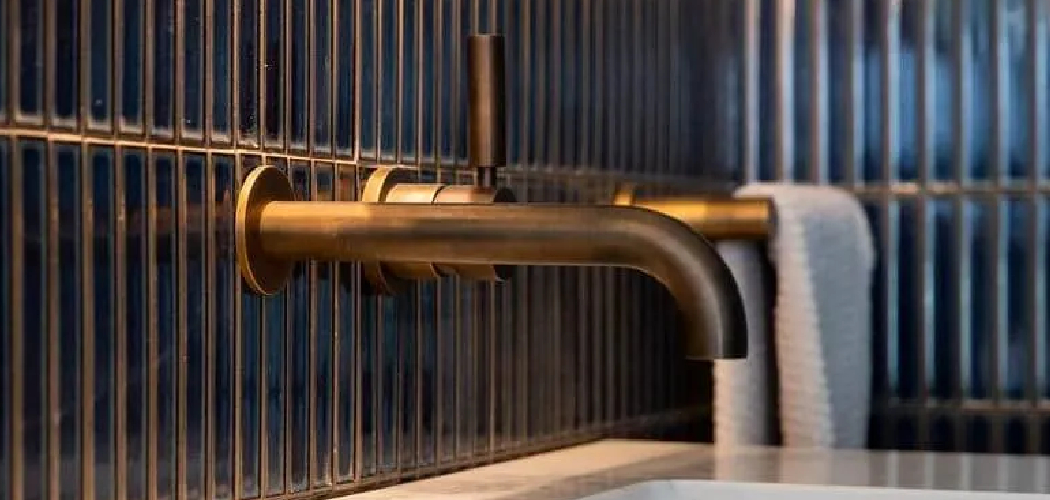Nickel faucets are popular in many households due to their sleek, modern appearance and excellent corrosion resistance. They add a sophisticated touch to kitchens and bathrooms, blending functionality with style. However, like all finishes, nickel faucets are not immune to common issues such as water spots, fingerprints, mineral buildup, and the eventual dulling of their shiny finish.
Maintaining their original luster requires proper care and attention to avoid damage to the surface. This article aims to answer an important question frequently asked by homeowners: how do you clean nickel faucets?
By following the step-by-step guide outlined here, you will learn safe and effective cleaning methods to preserve the beauty and longevity of your nickel faucets, ensuring they remain both practical and visually striking for years to come.
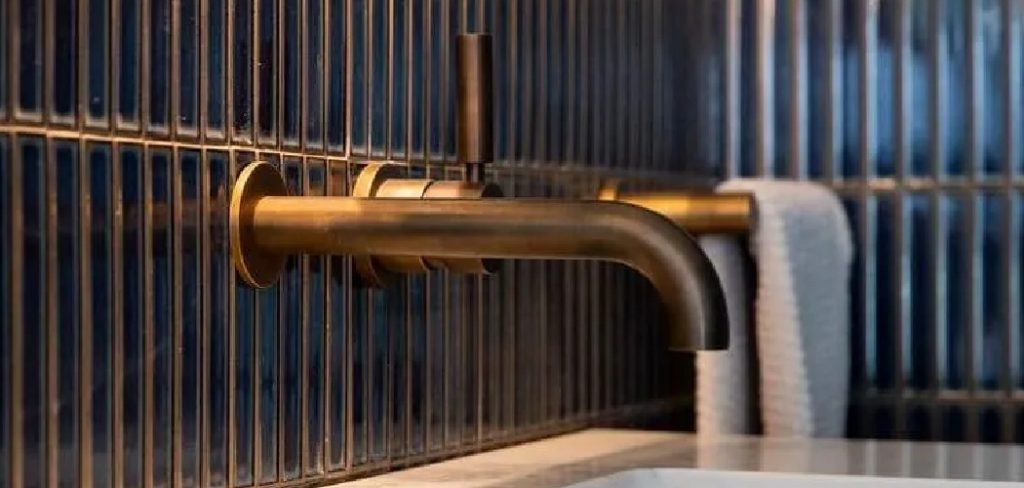
Understanding Nickel Finishes
Nickel finishes are a popular choice for faucets due to their elegance and durability, but not all nickel finishes are the same. The type of finish on your faucet influences its appearance, maintenance needs, and cleaning requirements. Below, we explore two common types of nickel finishes to help you better understand which one you have and how best to care for it.
Types of Nickel Finishes
- Polished Nickel: This finish is characterized by its shiny, highly reflective surface, giving it a luxurious and eye-catching appearance. However, due to its reflective nature, polished nickel shows water spots, fingerprints, and smudges more easily. Frequent maintenance is required to keep its brilliant sheen intact.
- Brushed or Satin Nickel: This finish has a matte surface with a softer, more understated look. It is excellent at hiding fingerprints and smudges compared to polished nickel, though it can still accumulate buildup or develop a dull layer over time.
Why Finish Matters for Cleaning
Understanding the type of nickel finish on your faucet is crucial when selecting cleaning methods. Some cleaners, particularly abrasive or acidic ones, can damage or dull certain finishes, compromising their appearance over time. By identifying your faucet’s finish, you can make informed choices to ensure you use a cleaning method that maintains its beauty without causing harm.
Materials and Tools Needed
Cleaning Supplies
- Soft microfiber cloths
- Mild dish soap
- Warm water
- White vinegar (diluted)
- Baking soda (optional for tougher stains)
- Soft toothbrush or cotton swabs
Avoid These Items
- Abrasive scrubbers
- Harsh chemical cleaners (e.g., bleach, ammonia)
- Steel wool or stiff brushes
Using the right materials and tools is essential to protect your nickel faucet from damage during cleaning. Soft microfiber cloths effectively remove dirt without scratching. Mild dish soap and warm water provide a gentle yet efficient cleaning solution.
For mineral buildup or tougher stains, consider using diluted white vinegar or a paste made from baking soda. A soft toothbrush or cotton swabs can help clean hard-to-reach areas. Avoid using abrasive materials or harsh cleaners, as these can scratch or tarnish the nickel finish over time, ultimately diminishing its appearance.
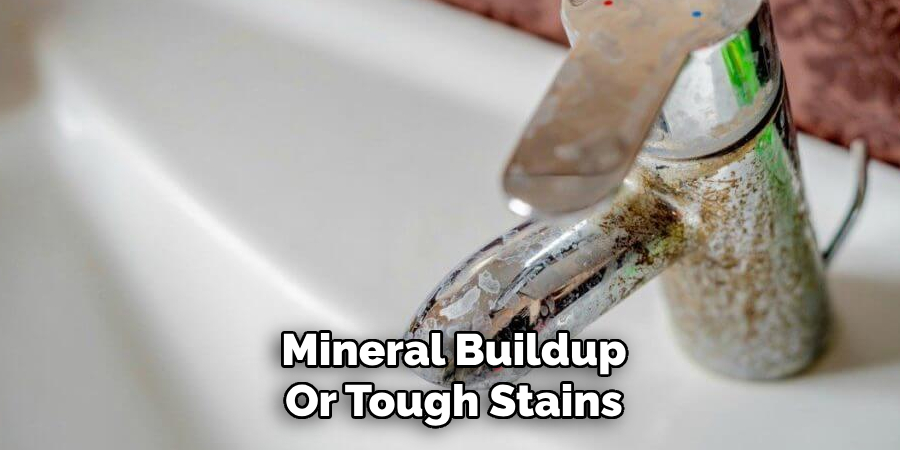
Daily Maintenance for Nickel Faucets
Quick Wipe-Down Routine
To maintain the shine and elegance of your nickel faucet, a quick daily wipe-down can make a significant difference. Use a damp microfiber cloth to remove water spots and fingerprints from the surface gently. Once clean, dry the faucet with a soft cloth to prevent water spots or streaks. Removing moisture ensures the faucet retains its luster and minimizes the risk of stains forming over time.
Soap and Water Solution
Mix a few drops of mild dish soap with warm water for a slightly deeper clean to create a gentle cleaning solution. Dampen a microfiber cloth with this mixture and carefully wipe down the faucet to remove dirt and residue.
Be sure to rinse the faucet thoroughly with clean water afterward to remove any soapy residue. Finally, dry the faucet thoroughly with a soft cloth to preserve its smooth, polished finish. Following this simple routine daily will keep your nickel faucet looking pristine and prolong its life, ensuring it remains a standout feature in your space.
How Do You Clean Nickel Faucets: Deep Cleaning for Tough Stains and Build-Up
Using Vinegar for Mineral Deposits
Mineral deposits can dull the finish of your nickel faucet over time. Mix equal parts vinegar and water in a spray bottle to tackle these. Spray the solution directly onto the affected areas and allow it to sit for 5–10 minutes to break down the deposits.
Afterward, use a soft microfiber cloth to wipe the area clean gently. Rinse thoroughly with clean water to ensure no vinegar residue is left behind, as it can be harmful if allowed to sit too long. This method effectively restores the faucet’s smooth and shiny surface.
Cleaning Around Hard-to-Reach Areas
Due to their intricate designs, the base, handles, and joints of your faucet can often harbor grime and dirt. Dip a soft toothbrush or a cotton swab in a soap solution or diluted vinegar to clean these hard-to-reach areas.
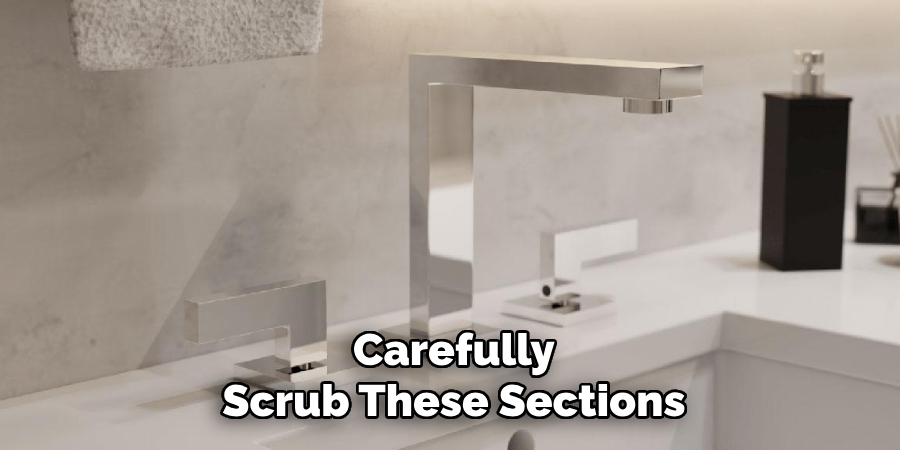
Carefully scrub these sections without applying too much pressure, as this could damage the finish. Pay close attention to tight corners to remove any hidden buildup. Once cleaned, rinse the areas thoroughly and dry them with a soft cloth.
Baking Soda for Stubborn Spots
Stubborn spots, such as hardened residue, may require a more targeted approach. Mix baking soda and water to create a gentle yet effective paste. Apply the paste to the affected spots using a soft cloth and gently rub. Rinse the area thoroughly with clean water and pat it dry using a soft cloth.
Avoid scrubbing too aggressively, as baking soda can damage polished nickel if not used carefully. This method ensures the faucet maintains its brilliance without compromising its finish.
Polishing and Protecting the Finish
Polishing Routine
To maintain the gleaming appearance of polished nickel, incorporate a regular polishing routine. After cleaning, use a dry microfiber cloth to buff the faucet gently. This will enhance its natural luster and remove any lingering smudges or water spots. Apply a few drops of baby oil to the cloth and gently rub it over the faucet’s surface for an extra level of shine. This simple step boosts shine and adds a subtle protective layer to the finish.
Protective Measures
Protecting your polished nickel faucet is just as important as cleaning and polishing it. Avoid allowing water to sit on the faucet, as it can lead to water spots or tarnish over time. Take care to avoid scented or colored soaps that can leave residues on the surface, potentially diminishing its sparkle.
For long-lasting preservation, consider applying a wax-based faucet polish specifically designed for nickel finishes — but only if the faucet’s manufacturer recommends it. By taking these protective measures, you can ensure your faucet remains pristine and retains its luxurious brilliance for years to come.

Mistakes to Avoid When Cleaning Nickel Faucets
When maintaining your nickel faucets, it’s important to avoid common cleaning mistakes that could harm their finish and longevity. Here are a few key pitfalls to steer clear of:
Using Harsh Chemicals
Products containing bleach, ammonia, or alcohol may be effective cleaners for some surfaces, but they can cause significant damage to the finish of nickel faucets. These harsh chemicals strip away the protective coating, leading to corrosion, discoloration, or even permanent tarnishing. Opt for mild, pH-balanced cleaners instead.
Skipping the Drying Step
Allowing water to dry naturally on your faucet might seem harmless, but it often leads to mineral deposits and unsightly water spots. Over time, this dulls the faucet’s shine and makes it harder to clean. Always use a soft, dry cloth to blot away water after cleaning or usage.
Scrubbing Too Hard
Abrasive pads or vigorous scrubbing may scratch the delicate surface of nickel faucets, wearing away their protective layer. Sticking to non-abrasive cloths or sponges and light circular motions to avoid this.
Not Checking Manufacturer Guidelines
Each faucet brand may have unique care recommendations, so failing to consult the manufacturer’s instructions can lead to improper cleaning techniques. Always check the care guidelines to ensure you use the correct products and methods.
Frequently Asked Questions
How Often Should I Clean My Nickel Faucets?
It is recommended to clean nickel faucets once a week to prevent the buildup of dirt and grime. However, if your faucets are used frequently or in areas with hard water, you may need to clean them more often.
Can I Use Harsh Chemicals to Clean My Nickel Faucet?
Harsh chemicals and abrasive cleaners should be avoided when cleaning nickel faucets. These can cause damage and discoloration to the finish. Stick to mild soap and water or a specific nickel cleaner recommended by the manufacturer.
What is the Best Way to Prevent Water Spots on My Nickel Faucet?
To prevent water spots, simply wipe down your faucet after each use with a clean, soft cloth. This will remove any standing water and prevent mineral buildup. You can also try using a vinegar solution (1 part vinegar to 3 parts water) as a natural alternative for removing water spots.
Just be sure to rinse and dry the faucet thoroughly afterward. Another preventative measure is to install a water softener system in your home, which can help reduce mineral buildup in your water.
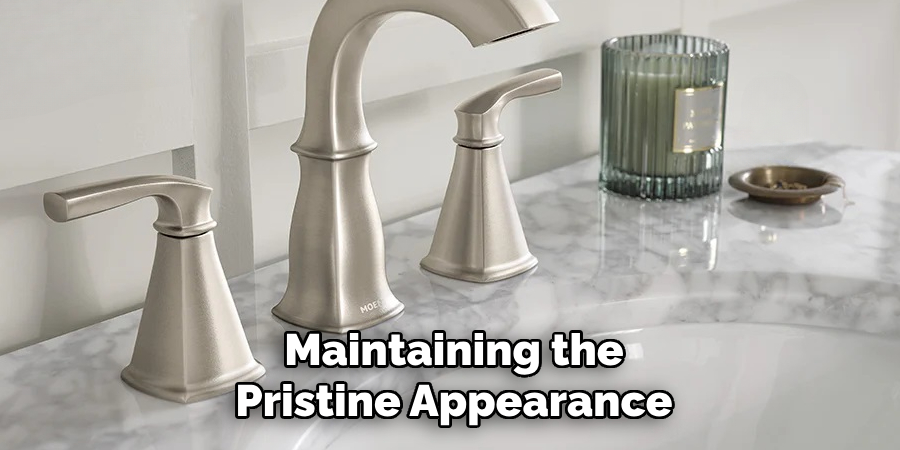
Conclusion
Maintaining the pristine appearance of your nickel faucets requires consistent care and attention to detail. Use gentle cleaning methods with soft cloths or sponges to avoid scratches, and rely on diluted vinegar solutions to tackle stubborn mineral deposits effectively.
Regular maintenance is key to preventing build-up and preserving their shine. Understanding your faucet’s finish and strictly adhering to manufacturer care guidelines ensure the best results. If you’re wondering how do you clean nickel faucets, the answer lies in a combination of gentle techniques and mindful upkeep. With proper care, your nickel faucets will stay beautiful and damage-free for years to come.

